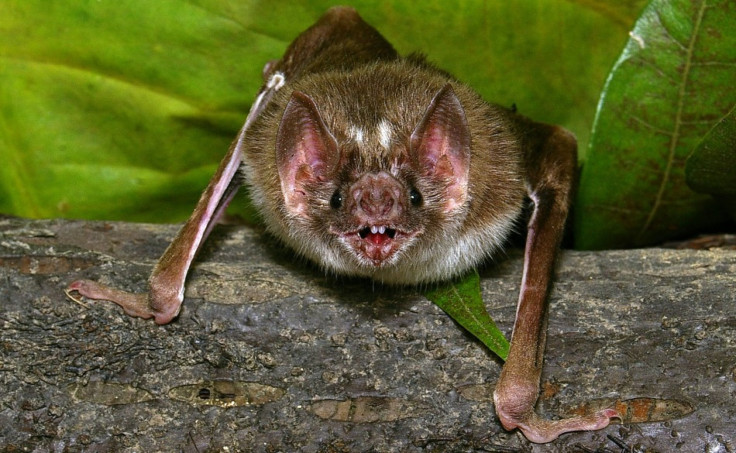Mystery Behind Vampire Bats' Ability to Spot Blood Revealed

Vampire bats have the unique ability to sink their teeth into their prey's body without missing the vein and feed on rich blood. Though scientists knew bats' noses guide them in spotting blood, they never quite understood how the nose mechanism worked.
Vampire bats' little secret is finally revealed to the world by researchers of the University of California, San Francisco and Instituto Venezolano de Investigaciones Científicas in Caracas, Venezuela, who studied wild vampires of South America to discover that a sensitive, heat-detecting molecule covering nerve endings on their noses called TRPV1 helps in blood detection. Their findings were published in the journal Nature on Wednesday.
"Vampire bats feed on blood, and it's useful for them to have an infrared detector to be able to find the circulation," said David Julius, the Morris Herzstein Chair in Molecular Biology and Medicine at UCSF, who led the research.
"Transient receptor potential cation channel subfamily V member 1" (TrpV1) is a protein found in human tongue, eyes and skin and is activated by heat greater than 43°C, capsaicin, the pungent compound in hot chili peppers, the pungent compound in mustard and wasabi, leading to painful, burning sensation.
Researchers say that the study is highly relevant to human health and drug design because these same molecules are involved in pain sensation in humans. A number of pharmaceutical and biotech companies are working on developing new pain medications that target molecules like TRPV1, UCSF press release said.
"There is a double-edged sword with pain," Julius said. "Pain is necessary as a warning system to let us know when we are in danger of injury but, at the same time, pain can outlive its usefulness as a warning system when it fails to resolve and becomes chronic and debilitating."
Though vampire bats resemble rodents they are evolutionarily related to dogs and horses. Vampire bats in the wild even gallop and leap across the ground similar to what horses do.
Vampire bats approach their prey on the ground, galloping quickly and quietly as they sneak up on, bite, and drink the blood from sleeping cows, goats and birds. Vampire bats are the only known mammal that survives solely on blood, and they need to drink it almost every day to survive. They support this need through a number of evolutionary adaptations.
Vampires' teeth lack enamel, which makes them razor sharp and allows them to delicately tear through the hide of a sleeping animal without waking it. Within minutes of sinking its teeth in an animal's flesh, an adult vampire bat can drink half its body weight in blood. Their major evolutionary adaptation, heat-sensing ability, allows them to "see" a vein at night.
The vampire bats are made popular through fiction and movies where their natural dietary habit of consumption of blood (hematophagy) adds to the horror value. Fictional vampires, similar to real vampires, pierce a hole in victim's neck to suck blood and are always nocturnal.
© Copyright IBTimes 2024. All rights reserved.












